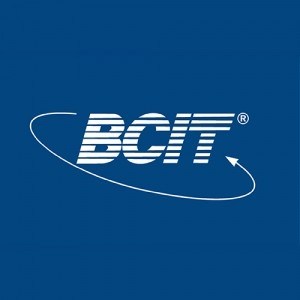Photos of university / #lifeatbcit
The Computer Systems – Human Computer Interface program at the British Columbia Institute of Technology offers students a comprehensive education in the design, development, and evaluation of user interfaces and interactive systems. This program is designed to equip students with the necessary skills to create intuitive, efficient, and accessible interfaces for a variety of technological platforms, including desktop, mobile, and embedded systems. Throughout the program, students will explore core concepts in computer science, human factors, and design principles, allowing them to understand both the technical and psychological aspects of user experience. The curriculum covers a broad range of topics such as user interface design, usability testing, multimedia systems, programming, and information architecture. Emphasis is placed on hands-on learning through projects, labs, and real-world applications, enabling students to develop practical skills in developing software that effectively meets user needs. Additionally, students gain experience with current tools and technologies used in industry, such as prototyping software, programming languages, and interface design tools. The program prepares graduates for diverse roles including user experience designer, interface developer, usability analyst, and interaction designer. With a focus on innovative and user-centered design, the program also emphasizes teamwork, communication, and problem-solving skills essential for success in the technology sector. Upon completion, students are well-equipped to contribute to the development of intuitive and engaging user interfaces that enhance the functionality and accessibility of various digital products and systems.
The Bachelor of Science in Computer Systems with a specialization in Human-Computer Interface at the British Columbia Institute of Technology offers students a comprehensive education in designing, developing, and evaluating intuitive and effective user interfaces for a wide range of digital applications. This program prepares students to understand the principles of human-computer interaction, ergonomics, user experience (UX) design, and usability testing, enabling them to create products that are both functional and user-friendly. Throughout the program, students engage in a blend of theoretical coursework and practical projects that emphasize the importance of user-centered design and accessibility. Core courses include introductory topics in computer systems, programming, and interface design, as well as advanced modules such as cognitive psychology, interaction design, visual communication, and multimedia development. Students will also gain hands-on experience through labs and team projects that simulate real-world scenarios, fostering skills in collaboration, problem-solving, and iterative design processes. In addition to technical skills, the program emphasizes critical thinking and research methodologies to evaluate interface effectiveness and improve user satisfaction. Students learn to utilize industry-standard tools and techniques for prototyping, testing, and refining user interfaces, ensuring they are prepared to meet the demands of the rapidly evolving technology landscape. The curriculum often incorporates topics like mobile interfaces, accessibility standards, and emerging technologies such as virtual reality and augmented reality. Graduates of this program are equipped to pursue careers in UI/UX design, human factors engineering, interaction analysis, and related fields in sectors like software development, gaming, telecommunications, and healthcare. The program also encourages participation in internships and co-op opportunities, providing valuable industry experience and professional networking. Overall, this degree program aims to develop versatile professionals capable of designing innovative, user-centered digital systems that enhance human interaction with technology, thereby contributing to more accessible and engaging digital environments.
Program requirements for the Computer Systems — Human Computer Interface program at British Columbia Institute of Technology (BCIT) typically include a combination of academic prerequisites, English language proficiency, and other criteria aimed at ensuring students are prepared for the specialized technical coursework. Applicants often need to demonstrate a high school diploma or equivalent, with strong background in mathematics and computer science fundamentals. Additionally, proficiency in English is mandatory, which may require providing results from standardized tests such as IELTS or TOEFL if the applicant's first language is not English.
The program may also specify required courses or credits from previous educational experiences, especially in areas such as mathematics, physics, and computer science. For international students, proof of language proficiency is necessary, while domestic students may need to meet residency or citizenship status criteria. BCIT prefers applicants who have demonstrated problem-solving capabilities, creative thinking, and an interest in human-computer interaction design.
Some programs at BCIT also recommend or require relevant work or volunteer experience in related fields, such as software development, user experience design, or hardware troubleshooting, to ensure students have practical exposure to the domain. Additionally, certain technical skills like familiarity with programming languages (e.g., Python, JavaScript), understanding of user interface design principles, or experience with graphic design tools can be advantageous but are not always mandatory.
Applicants should also prepare to submit a personal statement or motivation letter demonstrating their interest in human-computer interface and computer systems. Letter of recommendation from educators or professionals in the field might also strengthen an application. Once admitted, students are expected to meet ongoing academic standards, including satisfactory grades in coursework and adherence to program prerequisites for advanced subjects.
Overall, the program emphasizes a mix of theoretical knowledge and practical skills, requiring a comprehensive application that showcases both academic preparedness and passion for human-computer interaction and computer systems design fields.
The Computer Systems — Human Computer Interface program at the British Columbia Institute of Technology offers a range of financing options to support students throughout their studies. Tuition fees for domestic students are typically structured on a per-credit basis, with total tuition costs ranging according to the number of credits enrolled each semester. International students may face different tuition rates, which are generally higher than those for domestic students. In addition to tuition, students should budget for application fees, registration costs, and other ancillary expenses related to their studies.
Financial assistance programs available to students include government-sponsored loans and grants, such as the Canada Student Loans Program (CSLP) for eligible Canadian citizens and permanent residents, which provide low-interest loans and grants based on financial need. BC StudentAid is a key resource, offering various loans and bursaries to help students finance their education. These financial aid programs often require students to demonstrate financial need and meet specific academic progression criteria.
The institute also offers scholarship opportunities, which are awarded based on academic achievement, leadership, or other criteria specific to each scholarship. Some scholarships may be merit-based, while others are need-based. Students are encouraged to apply early and explore all available funding sources through the BCIT financial aid office and external organizations.
Work-study programs are available, allowing students to gain practical experience while earning income to support their education. These programs often partner with local businesses and organizations, providing part-time employment opportunities aligned with the students' field of study.
In addition, students enrolled in the program can consider payment plans offered by BCIT, which allow for deferred payments or installment plans to spread out tuition costs over the academic year. Private individual and family loans are also an option for those who do not qualify for government aid or who seek additional financial support.
Part-time work opportunities within the BCIT campus and affiliated industry projects can also contribute to students’ financial stability during their studies. Furthermore, students are advised to seek external scholarships, bursaries, and sponsorships from private foundations, industry partners, and government initiatives dedicated to supporting education in technology and innovation.
Overall, the financing landscape for the Computer Systems — Human Computer Interface program is designed to accommodate a diverse student body, providing multiple avenues for financial support, helping students focus on their academic and career goals without undue financial burden.
The Computer Systems — Human Computer Interface program at the British Columbia Institute of Technology (BCIT) is designed to equip students with the skills and knowledge necessary to develop innovative and user-friendly interfaces for various computer systems. This program focuses on understanding the principles of human-computer interaction (HCI), user experience (UX) design, and the technical aspects of creating efficient and accessible interfaces. Students in this program gain hands-on experience in designing, prototyping, and evaluating user interfaces for a wide range of applications, including web, mobile, and embedded systems. The curriculum combines coursework in computer science, design principles, psychology, and ergonomics to foster a comprehensive understanding of how users interact with technology. Emphasis is placed on usability testing, accessibility standards, and the integration of emerging technologies such as augmented reality (AR) and virtual reality (VR).
Graduates of this program are prepared to work in diverse roles such as interface designers, usability analysts, user experience researchers, and human factors specialists within technology companies, healthcare organizations, and government agencies. The program also offers opportunities for students to collaborate on real-world projects, often in partnership with industry leaders, ensuring they develop practical skills and connections that facilitate employment after graduation. With a focus on current trends and future developments in HCI and interface design, the program aims to produce professionals who are not only technically competent but also creatively innovative, capable of improving how humans interact with increasingly complex systems. The program is typically completed over two years, culminating in a diploma that qualifies graduates for various roles in the rapidly evolving field of human-computer interaction.


